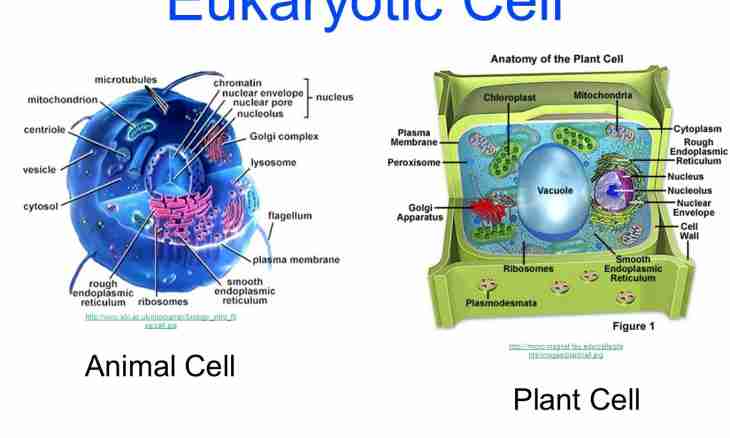Organisms consist of cages, and depending on living conditions and functions these "bricks" can differ from each other. The kingdom of plants has the features, and cages of which herbs and trees consist, are ideally adapted for performance of the tasks.
General structure of a plant cell
Plants are the multinuclear organisms consisting of millions of cages. Though at their organism there are various fabrics, cages have the general structure with the insignificant distinctions caused by the tasks which are carried out by them. In the center of a cage it is located large vacuoles, filled with the cellular juice representing liquid with the organic acids dissolved in it, minerals and sugars.
The young cage has several small a vacuole which in process of growth merge and can occupy up to 70% of all volume. Vacuoles create tourist's mountain pressure. In them there is a splitting and storage of organic matter. There are also hazardous substances which constitute danger to an organism.
Near vakuolyyu the kernel bearing in itself(himself) genetic material which is used at reproduction is located. The cellular space is filled with cytoplasm – liquid in which various biochemical processes necessary for normal cell activity proceed. The cage also contains plastids, the most known of which are the chlorolayers having a pigment a chlorophyll. Exactly thanks to this substance in plants there is a process of photosynthesis as a result of which they receive nutrients. Also at a plant cell there are leykoplasta in which nutrients, and chromolayers into which chlorolayers after destruction of a chlorophyll turn can stock up.
Plastids, as well as mitochondrions in an animal cage, possess the genetic material.
The plant cell is surrounded with a dense two-layer cellular wall. This structure consists of cellulose, provides the tourist's mountain pressure and additional protection to cage contents. A wall selectively of a pronitsayem, besides, in it there are openings – a time.
Contents of all cages are connected with each other by thin threads of cytoplasm – a plazmodesmama.
Differences of living cell from vegetable
The plant cell significantly differs from animal. In an animal cage there are central no vacuoles which takes a lot of place at plants, in organisms of invertebrates and vertebrate animals tourist's mountain pressure is not supported. In this regard there is no strong cellular wall also. Representatives of the kingdom of animals – heterotrophs, they receive energy, eating other organisms therefore they have no need for chlorolayers and other plastids. The main reserved substance at a plant cell is starch while at animals a similar role is played by a glycogen.

